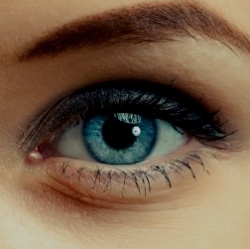
Optogenetics is one of the greatest achievements in gene splicing over the last decade, as it has helped researchers see how the brain works in animals by making neurons react to light. For the first time, however, the technique will be tried on a human subjects to help legally blind folks see for the first time.
Using research developed by Wayne State University scientist Zhuo-Hua Pan, a company called RestroSense will inject a virus doped with light-sensitive algae DNA directly into a patient’s eyes. So far, the only successful attempts at restoring vision in humans has come using the Argus II implant.
The tests are being tried on patients with retinitis pigmentosa, a disease that kills specialized rod-and-cone photoreceptors cells in the eyes, causing permanent blindness. Rather than repairing those cells, the team will targe ganglion cells located near the nerve fiber layer. The treatment should cause the cells to make a light sensitive protein and fire signals to the brain in response to light. The technique was proven to work on blind mice, which attempted to avoid bright lights like sighted mice following the treatment.
Scientists hope to generate at least 100,000 light sensitive cells, which should allow for a decent level of vision. In reality, however, they have no idea how well patients will see until they try it. The technique has some limitations. The algae cells are only sensitive to the color blue, so it’s expected that patients will only see in black and white. In addition, algae cells have limited light sensitivity compared to healthy retina, so researchers think patients will only see well in bright sunlight. If the technique works, the researchers could overcome the brightness problem by fitting patients with light-magnifying goggles.
Zhuo-Hua Pan and his colleagues figured that the eye might be an ideal place to test optogenetics in humans as far back as 2009. They’re already sensitive to light and have a relatively simple structure, so it’s easy to treat them with gene therapy. However, researchers have a host of other projects for optogenetics, including treating Parkinson’s disease and chronic pain. For that, they’ll first have to figure out what cells in the brain to target. Then, it’s simply a matter of switching on lights inside your head. Researchers could start testing such therapies in as little as five years.
